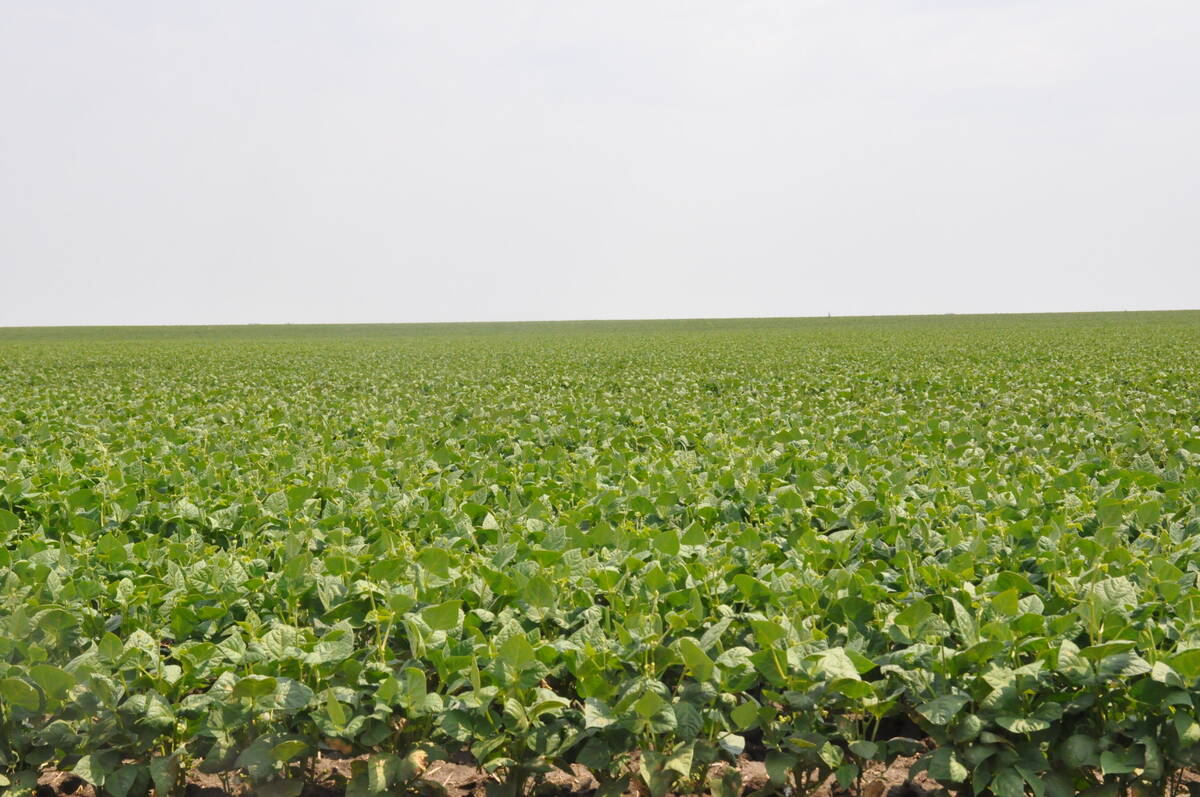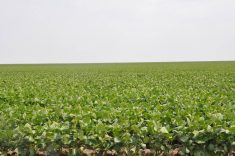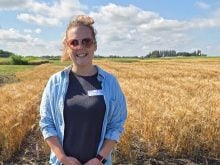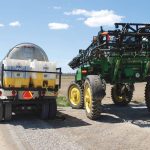WOODMORE, Man. – The ironies in her life are not lost on Priscilla
Reimer.
“I’m out in farming country but I have to drive 11/2 hours to Winnipeg
to get organics (in stores),” said the organic inspector who lives on a
quarter-section farm near Woodmore, Man.
Her work as an inspector and local school bus driver also forces her to
travel long distances each day to make a living. She rents some hayland
to help pay the taxes and works as a freelance journalist.
Read Also

Coloured bean production down, whites are up
Bean prices have been slumping and the outlook is for more of the same.
These are the choices she made to sustain the farm she bought in 1994,
which is stocked with a dozen sheep, two horses, a large dog and two
cats.
It was purchased as a weekend escape for Reimer, then an art curator
with a masters degree in art, history and philosophy. Set in a mixed
farming region, the once rundown farm had endured years of benign
neglect, said Reimer, who named it Burdock Meadows for the prolific
burs that grew there and stuck fast to her sheep’s wool.
Neighbours help with animal care when she’s travelling. Mainly she
manages on her own, with the month of May her busiest time.
“Lambing time is just intense. The life and death cycle is in your face
every minute,” she said, citing a lamb she pulled out that subsequently
died. “It really bites, it’s hard.”
Organic feed is hard to come by and expensive for the sheep she raises
each year for meat and wool, so she is not certified organic.
“I farm as close to organic as possible,” said Reimer, who spot sprays
for weeds, but tries to avoid antibiotics for animals.
“I think the food just tastes better,” she said of products raised
without chemicals. Loyal customers take the meat and wool each year.
Working alone suits her, said Reimer, who calls organic inspection a
solitary business.
“You have to find your own work and do your own reports.”
She advertises her services to certifying bodies like the Organic
Producers Association of Manitoba, or OPAM. Producers seeking organic
certification contact OPAM, which then dispatches an independent
organic inspector like Reimer to investigate the farm.
The inspector writes a report for the agency, which then reviews the
file and grants certification or advises the producer on what more
needs to be done.
It is not a job for the timid, the meek or for someone needing constant
direction, but for one who is self-motivated, said Reimer.
She stays abreast of the latest information through her involvement
with organic groups.
She took the inspector’s course from the Assiniboine Community College
of Brandon through distance education two years ago. An apprenticeship
program followed, as Reimer did inspections with an experienced organic
inspector.
She is now an accredited inspector with the Independent Organic
Inspectors Association. Upgrading and further training are required
every three years.
In her job, Reimer must verify the producer is not using conventional
agricultural chemicals.
She looks for spray drifting from other farms, a 7.6-metre buffer
between organic and conventional operations, clearly numbered storage
facilities and precise records on where crops are.
“I’m just there to confirm they are doing what they’ve said they are
doing,” said Reimer.
Much still rests on the farmer’s word, she admitted.
There are signs when farmers are not complying: “When people are not
forthcoming with information or if they push it all at you, your
suspicions are aroused.”
Originally inspectors had a role to play in education, but today they
are largely there to verify organic status. Any advice provided is
limited to helping the producer meet standards and improve organic
production techniques, she said.
“If I can help the farmer meet standards, that’s my role,” she said.
“I’m there to facilitate. I don’t consult.”
In the past, producers could build toward organic status over three
years. That has now widened to 10 years for an entire operation.
Allowances are also being made for large operations that wish to have
just a part of their business in organics.
According to the 2001 Census of Agriculture, 1,060 farms produced
certified organic products on the Prairies, with Saskatchewan having
the largest number in Canada.
“Organics are no longer underground,” Reimer said. “It’s no longer
hippies left over from the Sixties. More and more people are
experimenting with it.
“More and more farmers have turned to organics because they don’t want
to spend money without a return. The acid test for organics is whether
they stay in it.”
Anne Ford, of the Canadian Organic Certification Co-operative, pegged
the rate of growth among organic producers and processors at 20 percent
annually. The number of Saskatchewan inspections jumped to 80 last year
from 52 the previous year, Ford said, adding the co-op’s membership
also grew to 125 from six in the last decade.
She said record keeping and marketing have always been major challenges
for producers, although marketing has become easier as organics have
become more mainstream.
There are still premiums for organics but Ford cautioned that could
change as more people get into the field. For now, business is good.














